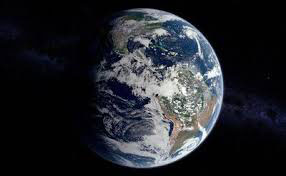Column: At the world’s edge

Feb 21, 2019
There is a common joke about Greenland that is often taught as fact. Hundreds of years ago, during the heyday of the Vikings, settlers of modern day Iceland, wishing to have this fertile country to themselves, gave it this cryptic name so that other prospecting colonizers would avoid it in favor of Greenland, which sounds more appealing to wannabe farmers and herders.
In actuality, Greenland’s name arises from the few fertile plains in the deep south, which are capable of sustaining small-scale agriculture. The vast, vast, vast majority of this enormous island, as one may know from that large map on the wall in high school geography class, is made of ice.
It may be assumed, by a cursory glance at that same map, that it constitutes a part of Canada. After all, it seems that all those glacial islands north of the continent are possessed by those cold-loving people. But that is not the case. In fact, Greenland is one of the few European possessions remaining in the Western Hemisphere.
Greenland, though autonomous, is under the sovereignty of the Kingdom of Denmark. Parts of North America and the Caribbean were once under the rule of the Danish crown. The U.S. Virgin Islands were Danish until 1917, for example.
Greenland’s population is composed mostly of the indigenous Inuit people, who are spread out across the continent in Greenland, northern Canada and Alaska. About a fifth of Greenland’s people are Danish in ancestry, and there are many Arctic researchers, oil workers and European fishermen.
It doesn’t make much sense for Greenland to be an independent country. Though it is twice the size of California, its population of 55,000 is one-fourth that of Akron, Ohio. Despite large oil and mineral reserves, its economy is dominated by the aforementioned fishing industry.
Greenland occupies an awkward quagmire space in international law. Though it is part of Denmark, it is not under the authority of the European Union. It has representation in the Danish Parliament, but has its own legislature, which is given great leeway to pass laws.
Many view Greenland as a kind of pseudo-colony, under the foreign subjugation of a European power from across the ocean. Though it does have more rights than Puerto Rico, for example, it can come across at times that Denmark holds this island as a hybrid between a military outpost and an oil rig.
As mentioned before, Greenland is basically an ice sheet. Because it is close to the Arctic Circle and most of the ice is permafrost (that is, it shouldn’t ever melt), it provides a sort of time machine into the past and the future.
By exhuming ice cores, or long cylinders of permafrost ice, the meteorological conditions of the earth of past eons can be examined. This is done by testing different layers of the core and examining which chemicals are present there. From this, scientists can tell when there were periods of warming or even catastrophic geological events (including asteroid strikes and volcanic explosions).
By this same logic, the effects of present day climate change can be observed in real time. As Greenland’s unmeltable ice begins to melt, scientists can predict the rate of, and consequences of, greenhouse gases in the atmosphere. When enormous ice sheets began breaking off and drifting into the North Atlantic, it raised an alarm that has so far gone unheeded by many people.
Though many of us know little about this island, it may become more important to us in the future. When the joke stops being funny and Greenland literally becomes green, perhaps we will appreciate the warnings she gave us from far away in the dark north of the world.











